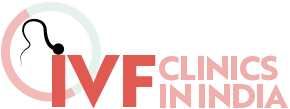Treatment for endometriosis usually involves medication or surgery. The approach you and your doctor choose will depend on how severe your signs and symptoms are and whether you hope to become pregnant.Doctors typically recommend trying conservative treatment approaches first, opting for surgery if initial treatment fails.
It is a disorder in which tissue that normally lines the uterus grows outside the uterus.The most common sites for the growth of this tissue is usually ovaries, fallopian tubes, peritoneum, or intestines. Incidence is around 10% of women. In the ovaries, the endometrioma is like a small balloon, filled with blood and chocolate like brown material. The balloon is surrounded by a cover called the capsule. This balloon is in the substance of a normal ovary. When you remove the endometrioma, you have to drain the chocolate material, dissect the capsule from normal ovarian tissue, taking care not to damage the ovarian tissue and deplete the oocytes. The main symptoms are pelvic pain, painful coitus, menstrual irregularity, infertility, and discomfort with bowel movements.
Endometriosis can be treated medically( oral tablet of progesterone called dienogest) or surgically depending on the symptoms .In patients having infertility it can be diagnosed as an incidental finding while doing ultrasound(endometrioma )or laparoscopy (mild endometriosis or endometrioma). During laparoscopy, if there is an incidental finding of mild to moderate peritoneal endometriosis, or ovarian endometrioma, it should be treated. However, care must be taken to avoid damaging the ovary while removing an endometrioma. If the endometrioma is diagnosed during routine ultrasound it can be ignored and treatment can be carried out as per standard infertility workup. One can test for tubal patency, try 2 to 4 cycles of ovulation induction with IUI. If that fails, one can go directly for IVF. There is no need to do laparoscopy before IVF.
However, in patients with very large endometriomas (which may come in the way of oocyte retrieval while doing IVF) or in patients with symptoms such as pain, one can go in with a laparoscope, drain the endometrioma, remove the capsule, taking care not to damage the ovarian tissue. The damage can be minimised by using carbon dioxide laser for surgery. Alternately the portions of the capsule near the ovarian hilum can be left behind. By this the loss of oocytes can be minimised. However, with this partial removal of capsule, the recurrence rate is higher. One can do an AMH test before and after the removal of the endometrioma. If AMH is reduced post-surgery, one can go for immediate IVF treatment. In unmarried girls, one can go in for fertility preservation by performing oocyte retrieval & freezing.
The most important thing is that if the endometriosis is associated with infertility then you might require treatment to hasten the process of pregnancy, using IUI or IVF. The main thing is to not to unnecessarily delay the process of pregnancy.
Ovarian reserve refers to egg quantity and quality–or reproductive potential–and it impacts a woman’s ability to conceive. Age plays a significant factor in fertility and is directly linked to reproductive aging.The concept of reproductive aging is based on the principle that eggs peak in number during fetal life, undergo degeneration, and do not regenerate. Remarkably, the most eggs women will have are when she is a 20-week-old fetus with approximately 6-7 million eggs. At birth, the number of eggs falls to 1-2 million, and at puberty, she has only 300,000-500,000 remaining eggs. From puberty though menopause, it is estimated women will ovulate about 400-500 total eggs.
